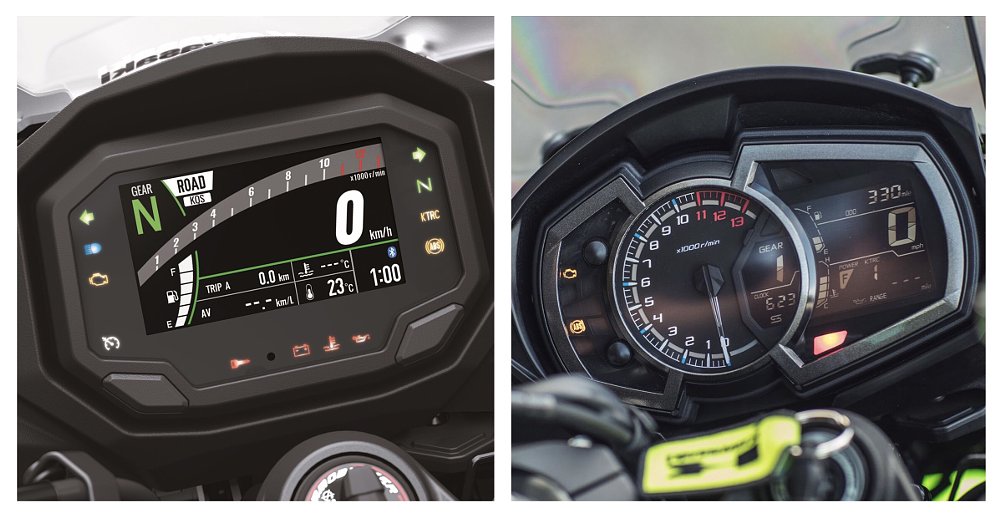If you saw Ari's press launch coverage of Ducati's new Streetfighter V4, you will be prepared for me to tell you that I haven’t yet ridden this new bike. Team Green is on lockdown due to the coronavirus pandemic, so even though a fresh Ninja 1000SX with Common Tread’s name on it is sitting one county away, the closest I’ll get for now is making engine noises at my kitchen table.
It could be worse. I did learn some new things about the updated 2020 model.
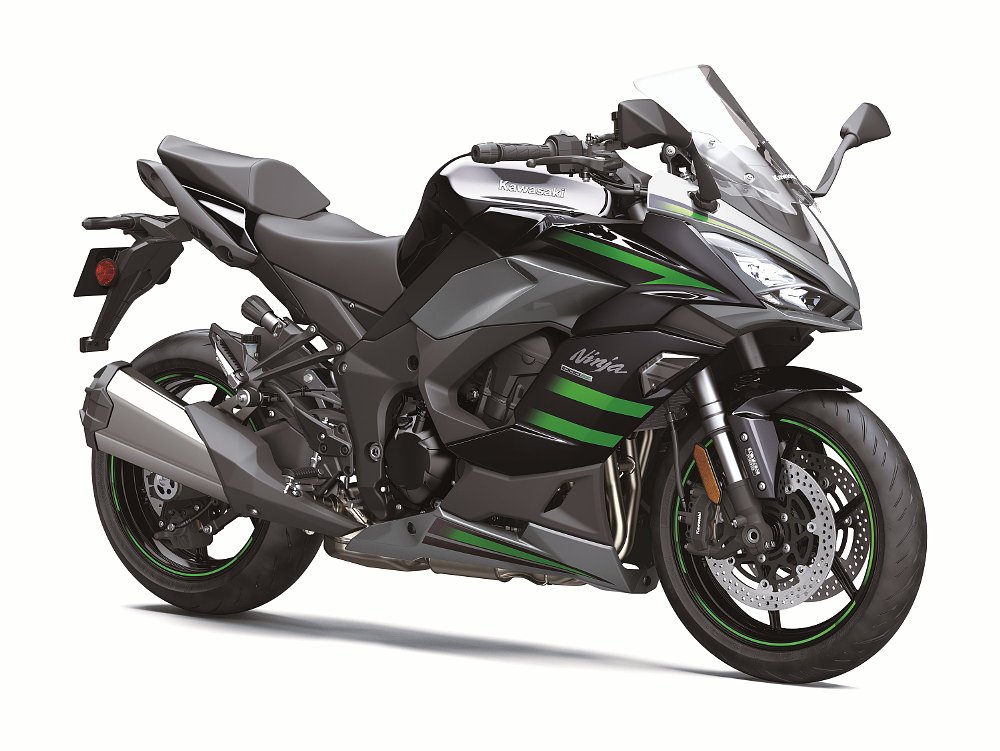
A slowly maturing Ninja
The biggest changes to this year’s Ninja 1000 are updates to the engine and electronics. Bore and stroke for the 1,043 cc inline four are the same, as is the compression ratio, and most of the internals. Kawasaki tweaked the profile of the cams with the aim of “reducing tappet noise” (that was the only clarification available from Kawasaki), and the exhaust was redesigned in order to keep up with ever-changing emissions regulations. It’s also fully ride-by-wire now — the final mechanical connection between the right grip and the engine has been removed. If that seems trivial, it’s not.
Arguably the most interesting upgrades to the Ninja 1000 are how new electronic features have been applied to the largely unchanged engine. Because the electronic throttle valves that control the intake are ride-by-wire, that allows the addition of cruise control, which was one of only a few flaws in the previous-generation bike. On the other end of the sporting spectrum, the bike now has a bidirectional quickshifter, so there’s no more pulling in the clutch like a sucker when you shift. Jokes aside, both cruise and the quickshifter are desirable upgrades for a bike aiming to be a flagship sport-touring rig.
Another big update to the Ninja centers around adding a 4.3-inch TFT display to the cockpit. It’s full color and has essentially all of the usual state-of-the-art tricks up its sleeve — it changes backgrounds from black to white automatically or manually, offers two different display settings, and links via Bluetooth to a proprietary app that can track a ride, show bike vitals, or adjust ECU parameters. (For some hands-on experience with Kawasaki’s Rideology app, check out Spenser Robert’s first ride of the Z H2.)
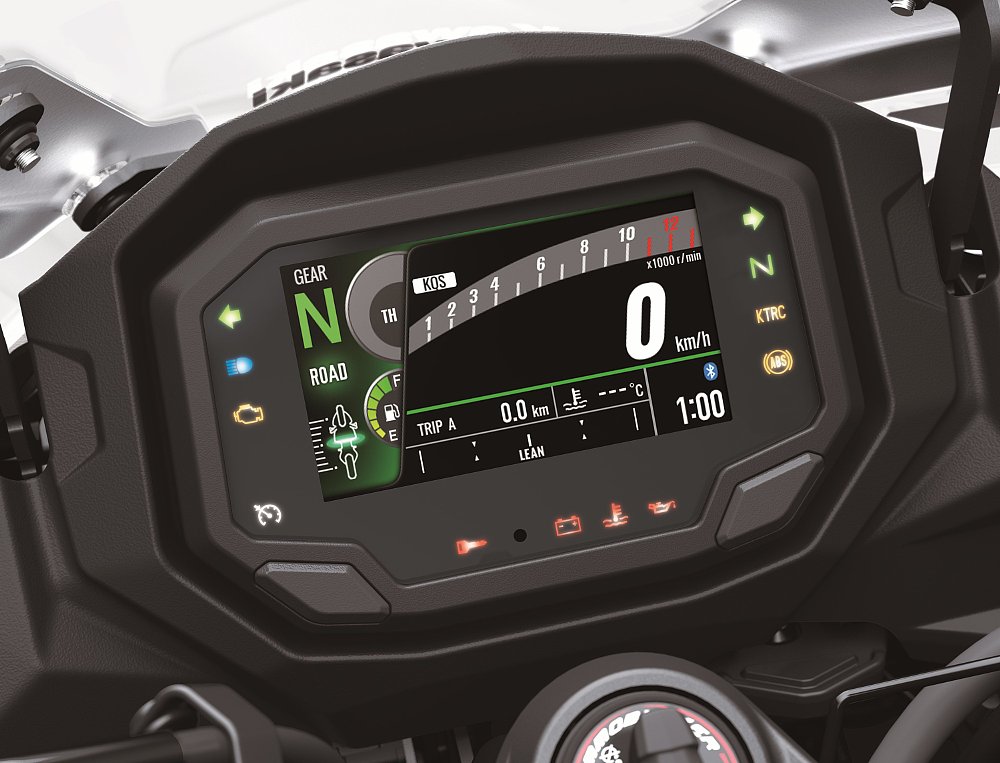
A big, juicy TFT screen and more sophisticated switchgear also emboldened Kawasaki to expand some of the electronics. The updates applied to the 2017 version of this bike included a six-axis IMU, “intelligent” braking system, corner management function, as well as adjustable traction control (in Kawi speak, that’s KIBS, KCMF, and KTRC). Now, updated electronics allow for different ride modes — Road, Rain, Sport, and Rider — which are switchable on the fly, as well as three levels of traction control. Kawasaki’s press materials even say “The system distinguishes between smooth, power front wheel lifts and sudden lift, allowing smooth lift if acceptable acceleration is maintained.” Little wheelies are OK, in other words, as long as they’re done right. Respect. KTRC can be turned off, but only in the customizable “Rider” mode.
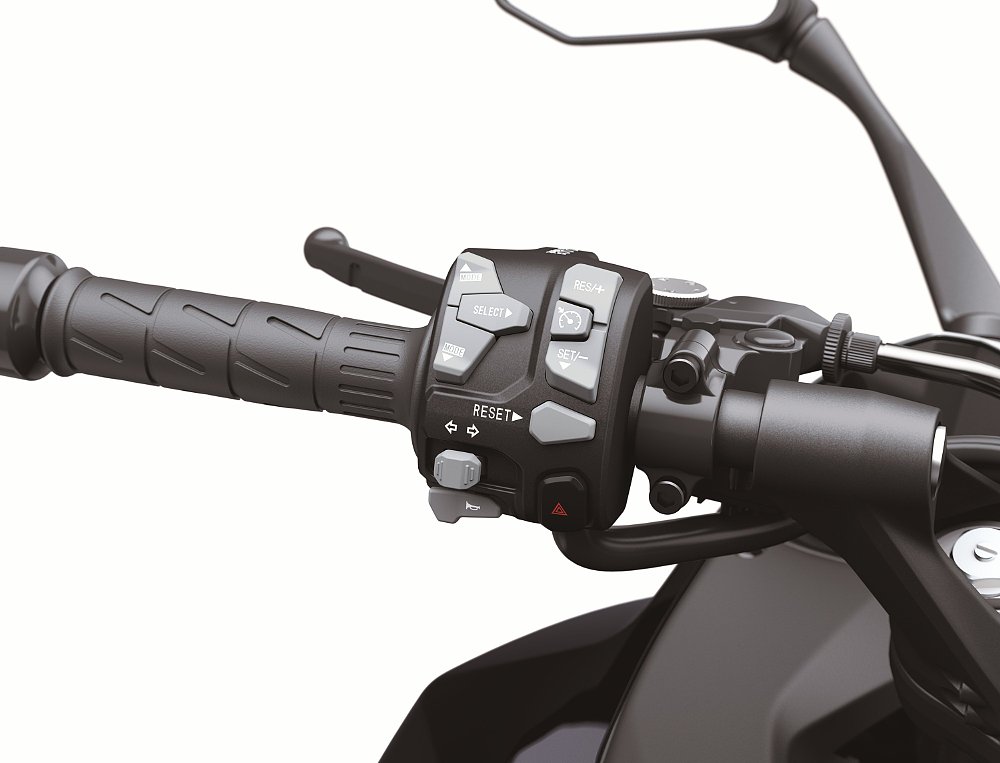
Less obvious work done to the new Ninja 1000 was redesigning the intake funnels feeding air to the engine, with the outer two stacks (cylinders one and four) using shorter tubes than the inner two. Kawasaki cited emissions in relation to the intake lengths, practically the same change that was made to the 2020 Z900 intakes, incidentally. Those two machines (Ninja 1000SX and Z900) are obviously different, but it goes to show that even the small engineering gains are worth spreading out over multiple models.
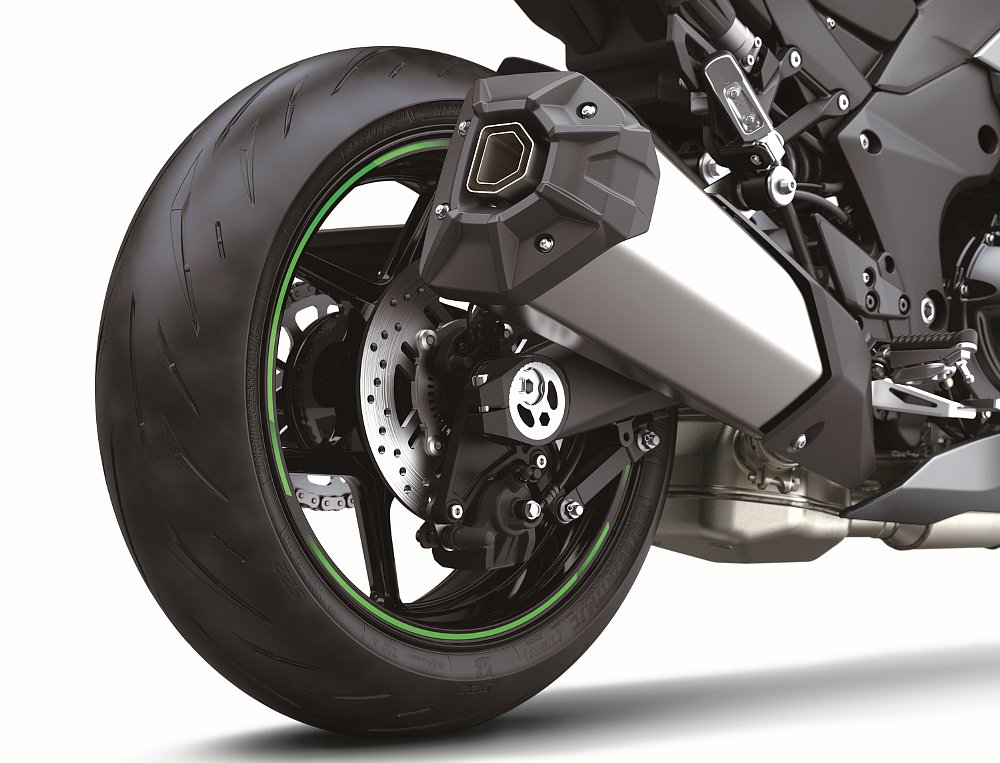
Along with a fancy dash, cruise, and a quickshifter, there are a few other notable updates. The exhaust was redesigned, also with emissions in mind, and because it sits on the right side only it came out 4.4 pounds lighter.
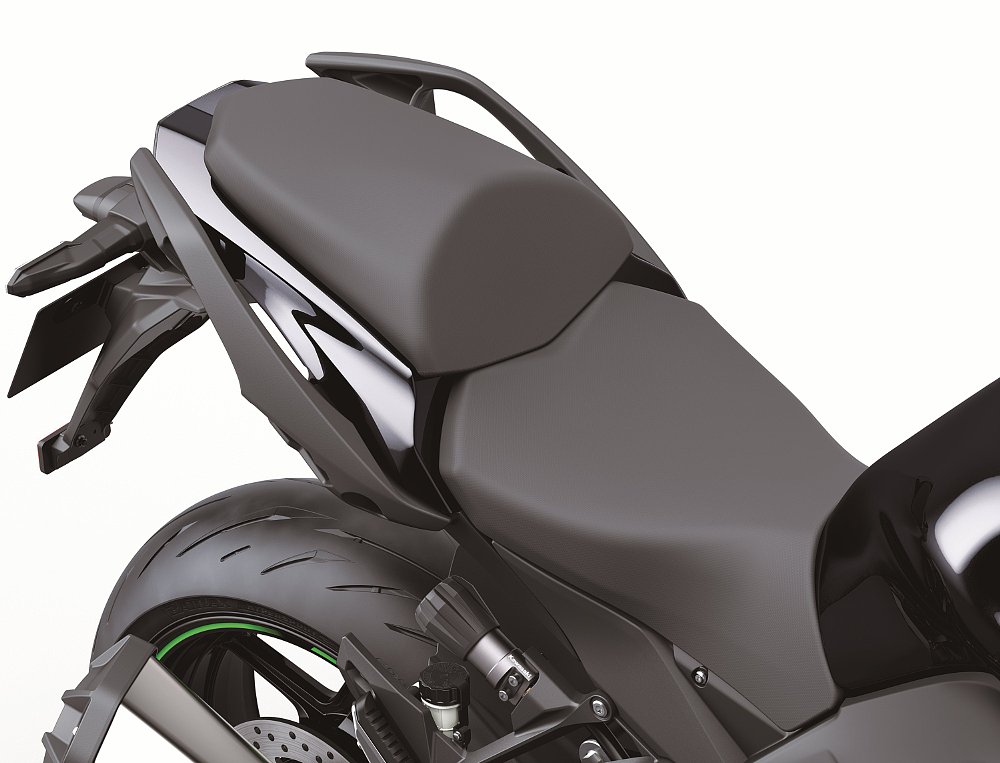
The seat uses a new foam for both rider and passenger that Kawasaki claims is more comfortable. I can’t speak to that, obviously, but I did notice that the claimed seat height went up 0.2 inches, so I’m hoping for a little extra padding and a shade more legroom. Maybe even because of a taller seat, the windshield is also set at a steeper angle in the base position, and now has four adjustments instead of three. Are you sensing a theme here? I’m tempted to make a joke about the windshield being bifocal, but you get the idea.
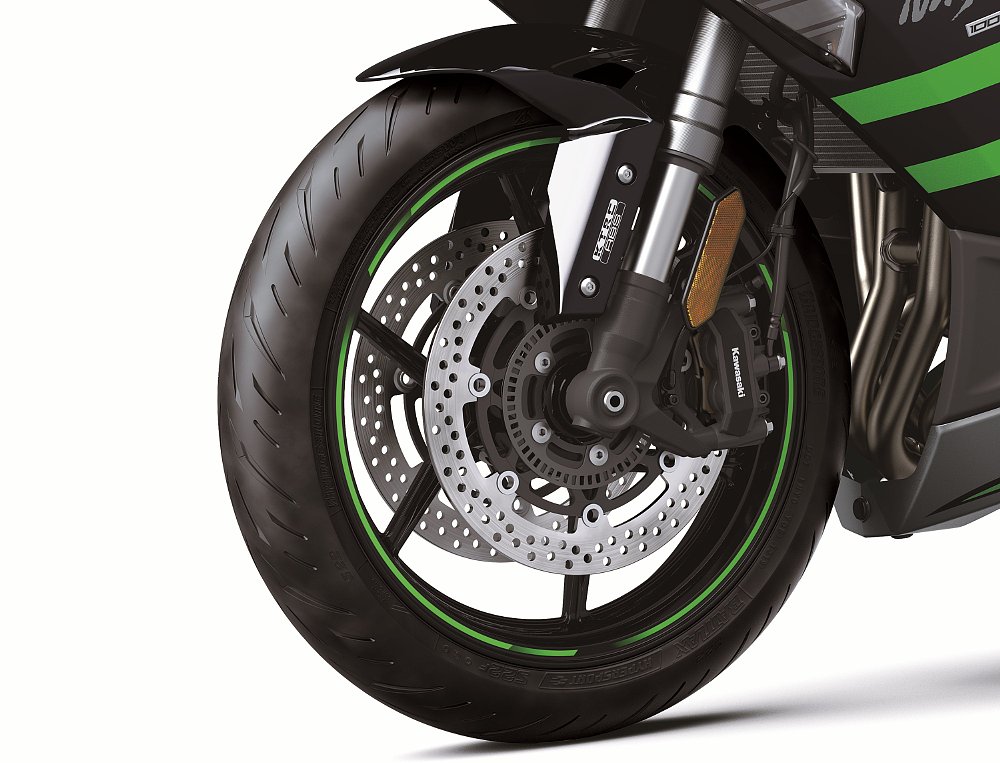
A review, from afar
After letting the changes to the new Ninja 1000SX sink in, I certainly get the feeling that the bike has been made more mature and upmarket, and that’s understandable. In 2017, Kawasaki said its prototypical Ninja 1000 owner/buyer at the time had a median yearly household income of $120,000. For 2020, that number went up to $137,000 (the mean age stayed the same, at 47). So, naturally Kawasaki wants to move in the direction of this machine being a sport-touring vessel that lacks nothing.
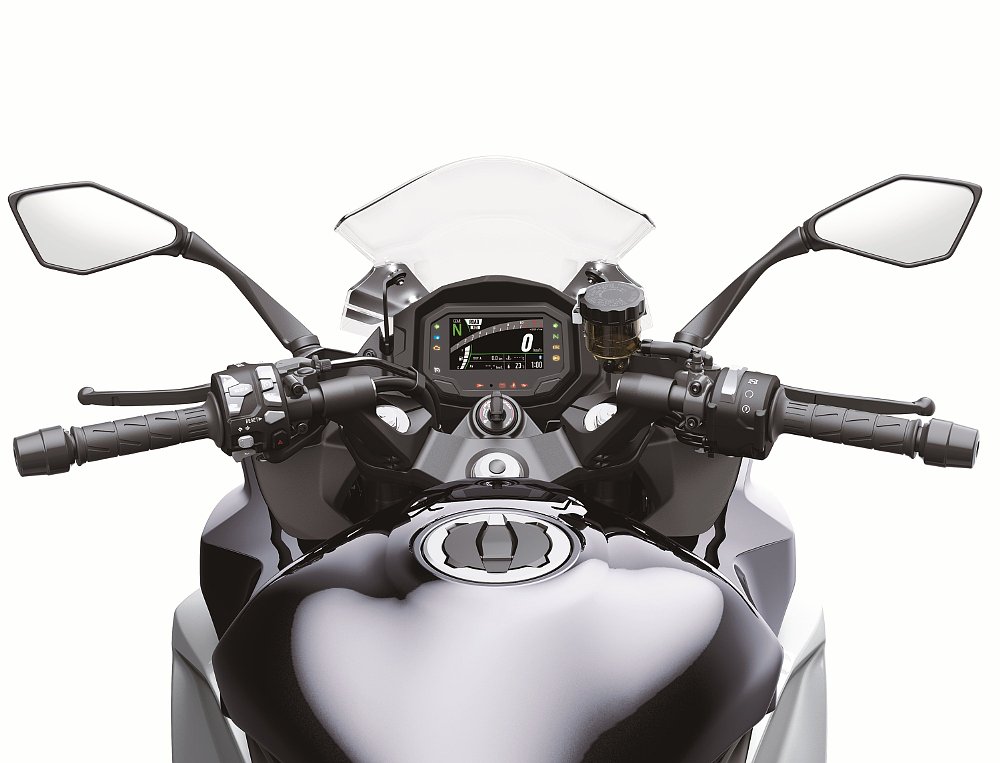
The updates are significant, and speak directly to most of the things that needed to be improved. The only thing I can think to complain about at this point is the gearing, which hasn't changed and is historically too short. A wider spread of ratios in the transmission or at the very least taller final drive would make the Ninja 1000 engine more relaxed on the highway and extend the range on the nicely sized five-gallon tank. One of those solutions is pretty attainable in the aftermarket, I admit.
At the end of the day, there's undeniably a lot of fresh kit on board. And there’s more little stuff: There’s a new set of vents that push warm air away from the rider, and small slits have been added in the fork internals to help smooth out low-speed compression damping. It’s not new for 2020, but how about the fact that the ECU adjusts different sets of parameters to help control traction (ignition, fuel, and air) depending on what level of KTRC is selected? There’s nothing groundbreaking built into this Ninja 1000, but it does use complex and advanced technology, especially considering the price only went up $200. Heck, I’ve spent a thousand words now just trying to explain it all to you.
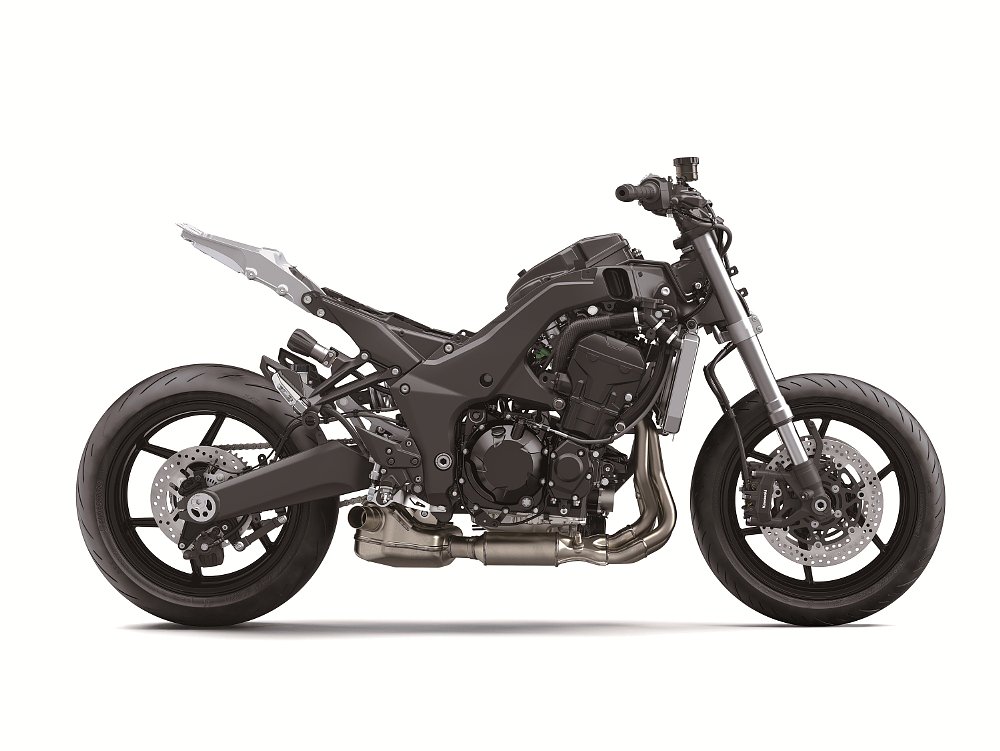
There is always the chance that one or two extra brushstrokes will ruin the painting, but I don’t think that will be the fate of the 2020 Ninja 1000SX. In my opinion, the previous model was a stellar sport-touring machine — fast, agile, and easy to use — that arguably didn’t need to be updated to be a good motorcycle or a good value. I’m excited to eventually try the ride-by-wire throttle response, quickshifter, cruise control, and spin through the settings on the color dash. And, of course, test that wheelie control. But until then I’m going to “commute” to the other side of this room and see what’s in my fridge. Stay safe, everyone, wherever you’re off to next.
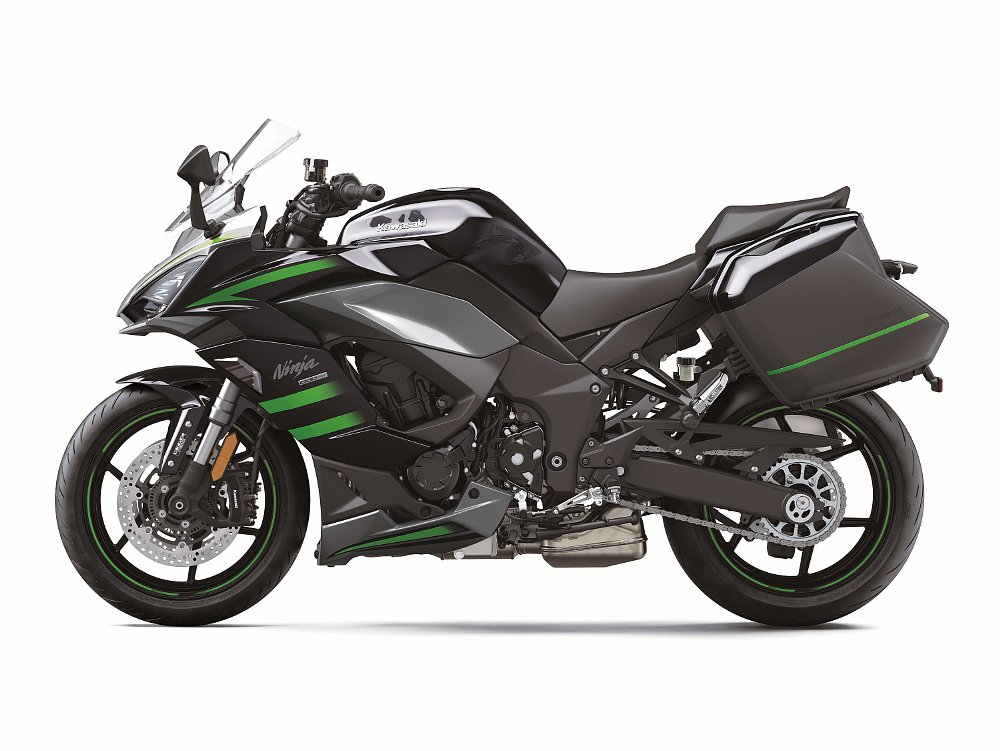
| 2020 Kawasaki Ninja 1000SX | |
|---|---|
| Price (MSRP) | $12,399 |
| Engine | Liquid-cooled inline four, DOHC, four valves per cylinder |
| Displacement | 1043 cc |
| Bore x stroke | 77 mm x 56 mm |
| Compression ratio | 11.8:1 |
| Power/torque | NA horsepower / 81.7 foot-pounds @ 7,800 rpm |
| Transmission | Six speed, bi-directional quickshifter |
| Front suspension | 41 mm inverted Showa fork, adjustable for spring preload, compression and rebound damping (4.7 inches travel) |
| Rear suspension | Showa "back-link" monoshock, adjustable for spring preload (remote) and rebound damping (5.7 inches travel) |
| Front brake | Dual 300 mm discs, Tokico four-piston radially mounted monoblock calipers |
| Rear brake | Single 250 mm disc, single-piston Tokico caliper |
| Tires front/rear | 120/70ZR17; 190/50ZR17 |
| Steering head angle/trail | 24 degrees/3.9 inches |
| Wheelbase | 56.7 inches |
| Seat height | 32.3 inches |
| Wet weight | 514 pounds |

 Membership
Membership


